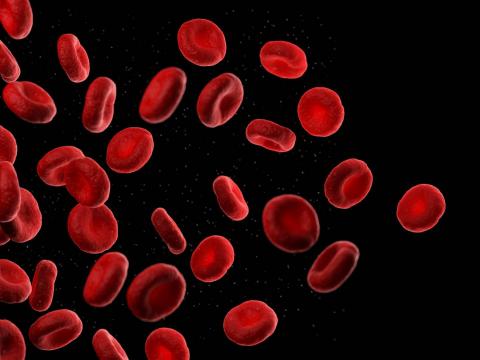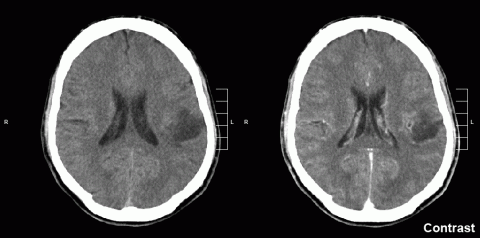Reaction: Sensory stimulation therapy counteracts cognitive damage from chemotherapy in mice
A treatment using lights and sound pulses can protect mice from cognitive decline associated with chemotherapy, according to a research team at the Massachusetts Institute of Technology in the US. The benefits are greatest when the therapy is used early and preventively at the same time as chemotherapy, says the study, published in Science Translational Medicine. The use of this non-invasive sensory stimulation therapy to alleviate other pathologies has already been studied.

Raquel Abalo Delgado - estimulación quimio EN
Raquel Abalo Delgado
Professor of Pharmacology at the Rey Juan Carlos University
Cancer mortality has been greatly reduced in recent decades thanks to chemotherapy, but these treatments are aggressive and also affect non-cancerous cells, so, in addition to causing adverse effects during treatment, they can produce long-lasting or permanent sequelae in survivors.
Anti-cancer chemotherapy can affect the brain, with alterations in memory, attention and executive functions, as well as chronic fatigue, which are very disabling for cancer survivors. The clinical picture has been known for more than 40 years and is called chemo-brain or chemo-fog, but its molecular mechanisms (direct neuronal damage, and also indirect, through the inflammatory response to treatment) are not yet clear and there is no clinical treatment at present. Interestingly, the alterations in chemo-brain are very similar to those that occur in neurodegenerative diseases such as Alzheimer's disease, so the treatments being investigated in this pathology could also be useful in chemo-brain.
This research has evaluated a non-invasive method of sensory stimulation based on the use of light or sound stimuli emitted at a frequency of 40 Hz that induces neuronal activity at the same frequency in the brain. This frequency is in the 'gamma' range, which is related to cognitive functions such as attention and memory. The strategy employed is therefore called 'gamma training using sensory stimuli', or GENUS for short. Importantly, this methodology is non-invasive (no obvious damage to the body's cells or tissues). So far, GENUS has shown neuroprotective effects in animal models of Alzheimer's disease and cerebral ischaemia. Moreover, it did not produce undesirable effects in healthy volunteers and in patients with a moderate degree of Alzheimer's disease.
The authors tested the potential usefulness of GENUS in two mouse models treated with cisplatin and methotrexate, two anti-tumour drugs that belong to different chemical families and produce their cellular and molecular effects by different mechanisms. In addition, they have applied the treatment at two different times, during chemotherapy and 90 days after, to determine whether it is more effective in preventing the development of chemo-brain or, once it has developed, in counteracting, alleviating or curing it.
The effects appear to be related to the protection of oligodendrocytes, a key cell type in the formation and maintenance of myelin sheaths, a substance that coats, insulates and protects the axons of brain neurons involved in, among other things, cognitive functions. Specifically, they observed that GENUS did not increase the generation of new myelin sheath cells, but made them more resistant and facilitated their survival during cisplatin treatment.
When applied during treatment with the anti-tumour drug, GENUS produced an improvement in the signs of cisplatin-induced chemo-brain in several specific behavioural tests to assess short-term memory and attention. Moreover, this cognitive improvement was observed even more than 120 days after the start of chemotherapy treatment, although at this time point some of the protective effect of GENUS on brain cells and molecules was lost. On the other hand, when GENUS was applied, not during chemotherapy, but 105 days after the start of chemotherapy, it produced little behavioural benefit and did not significantly improve the pathological alterations in the brain, suggesting that the effect of GENUS is more protective and preventive than palliative or curative.
Finally, a similar study was conducted using methotrexate, another anti-tumour drug with a very different chemical family and molecular and cellular mechanism of action, to determine whether the effects of GENUS are specific to cisplatin-induced chemo-brain or whether they are generalised. In this case, the cellular and molecular effects of GENUS in the brain were not as long-lasting, nor was it able to mitigate the damage already caused when used 100 days after anti-tumour treatment. While there was a reduction in spontaneous locomotion in the cisplatin model (perhaps related to the peripheral neuropathy it produces), this was not observed with methotrexate. Although the improvement produced by GENUS in the behavioural effects of the two chemotherapy drugs used were similar, the duration of benefit and the cellular and molecular effects were different.
The study has some limitations. Firstly, the animals used were age- and sex-specific and, very importantly, without cancerous or other pathology. Further studies are needed to determine the influence of these factors on the benefit of this new treatment, which, in any case, will require a personalised application in terms of duration. It is also not known to what extent the frequency of sensory stimulation used is optimal and specific to prevent chemo-brain compared to other situations in which neurodegeneration is present. As a collateral benefit, a certain anxiolytic effect of GENUS was observed in both models, which could also be beneficial in other applications, but this would need to be confirmed using more specific tests to measure anxiety in the animals. Further studies are also needed to assess whether GENUS can counteract or protect against other adverse effects of chemotherapy, both acute (nausea and vomiting, diarrhoea, sleep disturbances...) and prolonged (cardiotoxicity, sensory peripheral neuropathy...), or possible interference (cardiotoxicity, sensory peripheral neuropathy...). ), or the possible interference (positive or negative) with the anticancer effect of chemotherapy or with the effects of other treatments used to protect the patient from the adverse effects of chemotherapy (antiemetics, antidiarrhoeal drugs, anxiolytics, neuroprotectors, etc.). ).
In short, this study shows that GENUS, a minimally invasive method of auditory-visual sensory stimulation of gamma neuronal activity, is able to protect against neuronal damage. The greatest benefit would be obtained if applied during chemotherapy cycles, as is already done with cold hats to reduce hair loss or cold gloves and socks to reduce the occurrence of sensory peripheral neuropathy. Although much remains to be studied in animal models, the results obtained so far are very promising and the fact that, so far, this strategy has proved safe in pilot clinical trials in other contexts, encourages the hope that it can be incorporated into clinical practice to improve the quality of life of cancer survivors, which is the next goal to be achieved in the fight against this scourge.
TaeHyun Kim et al.
- Research article
- Peer reviewed
- Animals



